At present, the pipeline cleaning method is mainly manual entry into the pipeline for manual cleaning. The oil fume pipeline has a narrow space, oil stains are vertical and horizontal, manual cleaning is troublesome, the working environment is harsh, and the working efficiency is low. After the cleaning is completed, the workers are covered with oil stains. The second is the overall disassembly for cleaning. Although it can be cleaned, the workload is large and the cost is high. There is also a high-pressure water gun for cleaning, but the amount of water is large, and the cleaned oil stains return to the kitchen workbench along the pipeline, causing secondary pollution. Cleaning can only be carried out during non-business hours.
Therefore, robots that can replace manual entry into lampblack pipes for anhydrous cleaning or less water cleaning are essential.
The oil fume pipeline in the shopping mall is a through whole, the material is generally metal material, and the surface is smooth. When manually entering the pipeline for cleaning, the oil stain on the pipeline wall can be shoveled off with a small shovel, leaking out of the original metal pipeline.
Therefore, similar to the working principle of a car wiper, the oil stain is shoveled on the pipe wall by a wiper blade with a certain inclination angle, and the cleaning ability is strong. Even the oil stain stuck on the pipe wall for ten years can be easily shoveled off. If there is more oil pollution, the equipment can be filled with high-temperature alkaline water into the pipeline for atomization treatment. Due to the different sizes of oil fume pipes in shopping malls, in order to work on all sides at the same time, an adjustable telescopic rod is required to match the size of the pipe. The scraper adopts detachable design. Scrapers of different lengths are suitable for different pipe sizes. If the size of the scraper is longer than the size of the pipe, the scraper can be rotated in a single axis to enter the pipe to work. The scrapers on the upper and both sides precede the scrapers on the bottom surface, so the oil stains shoveled off on the upper and both sides are sucked into the container through the suction nozzles on the bottom, and the container can be taken out and poured after being full to realize anhydrous or less water cleaning and avoid secondary pollution of the kitchen caused by large amount of water cleaning.
Users can also observe the interior in real time through the camera connected to the device.
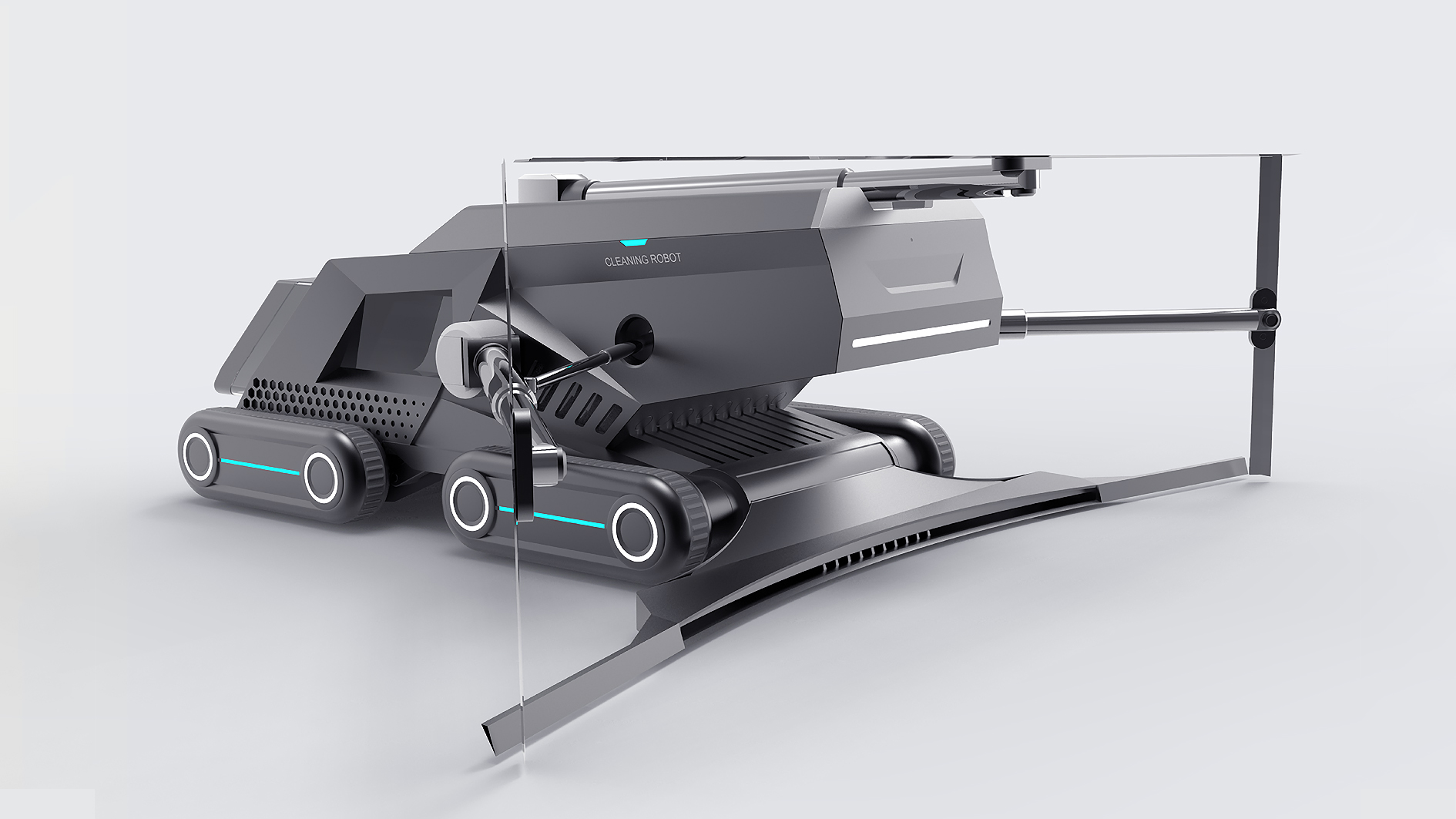
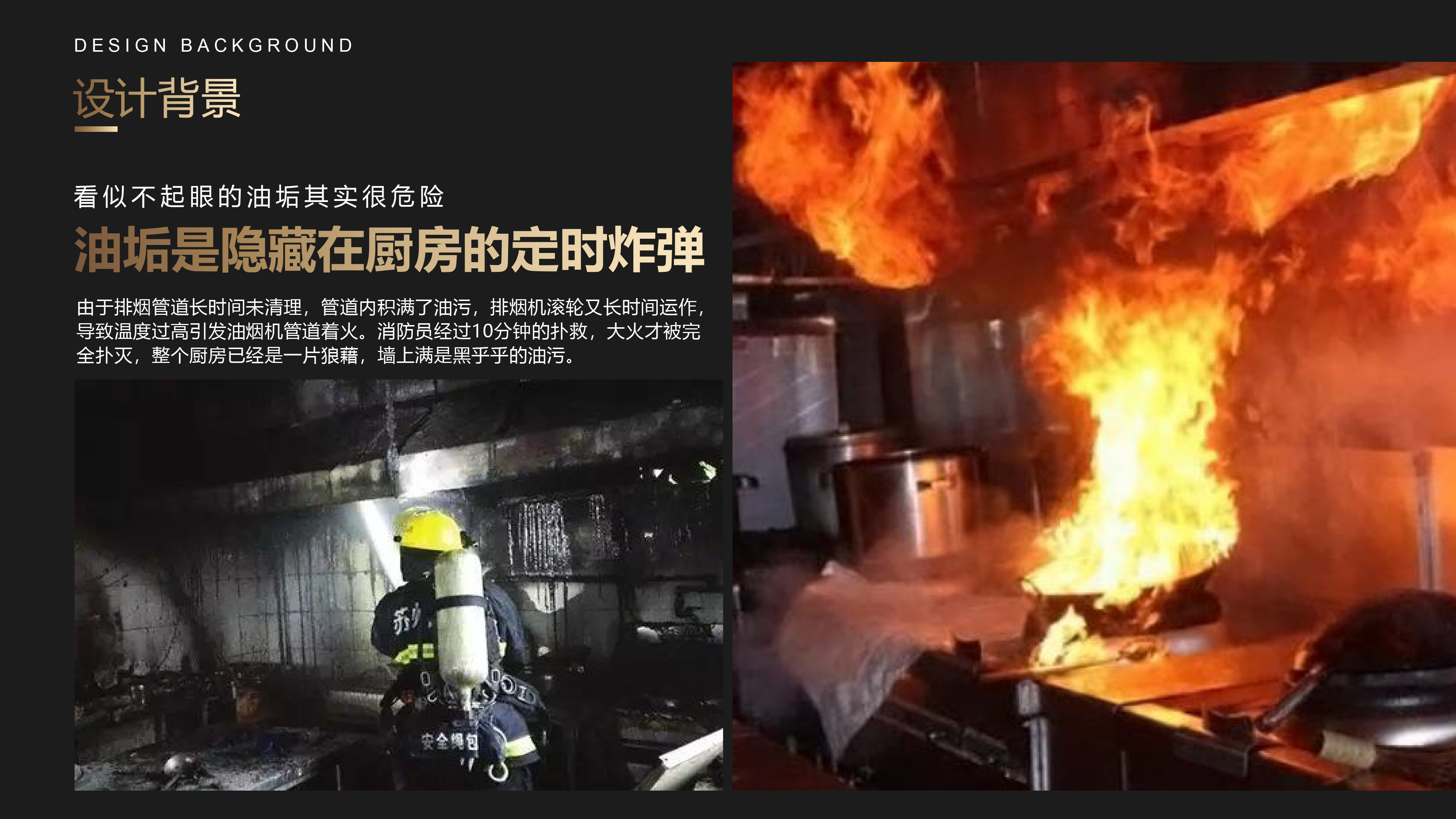
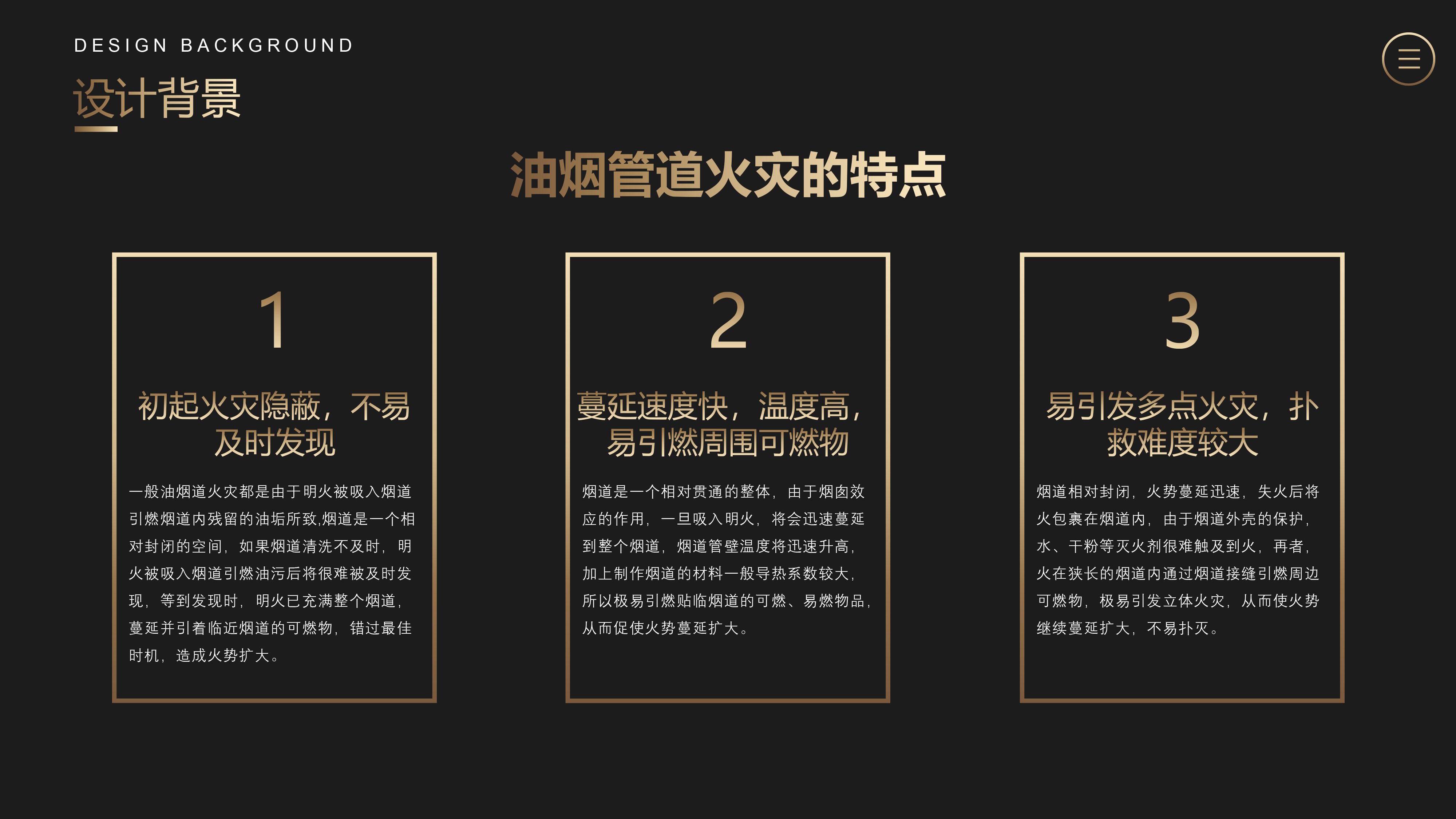
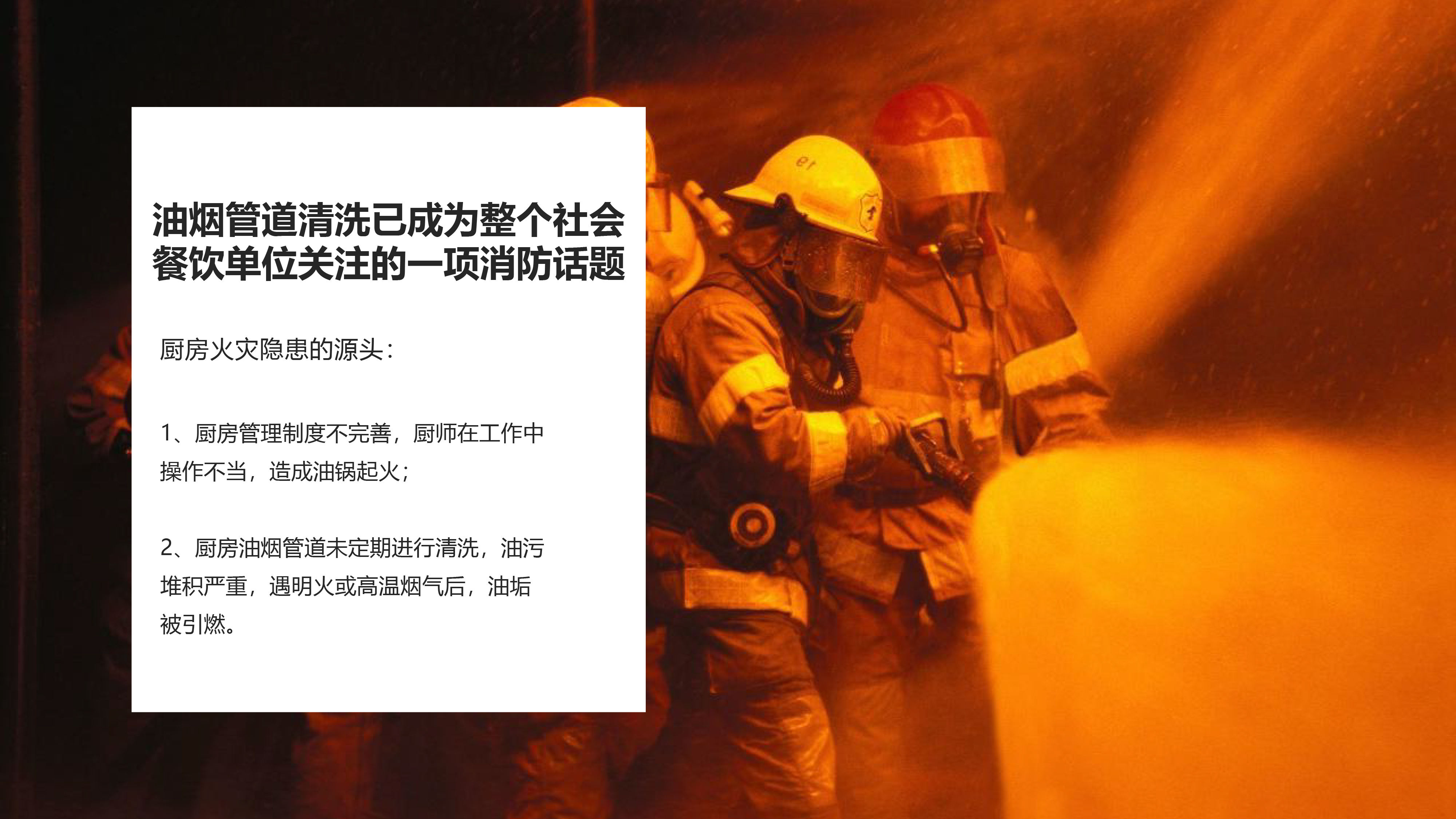
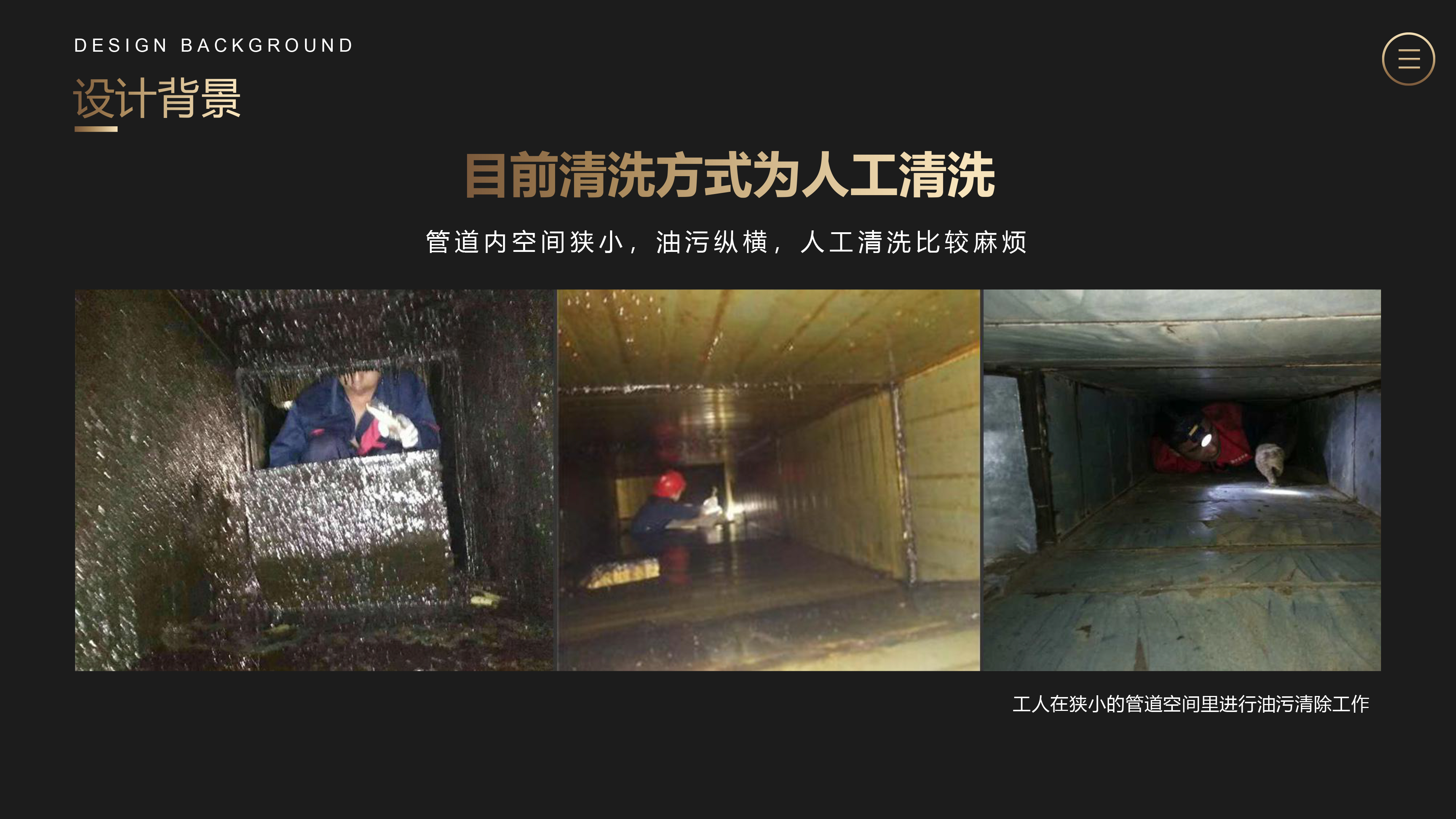



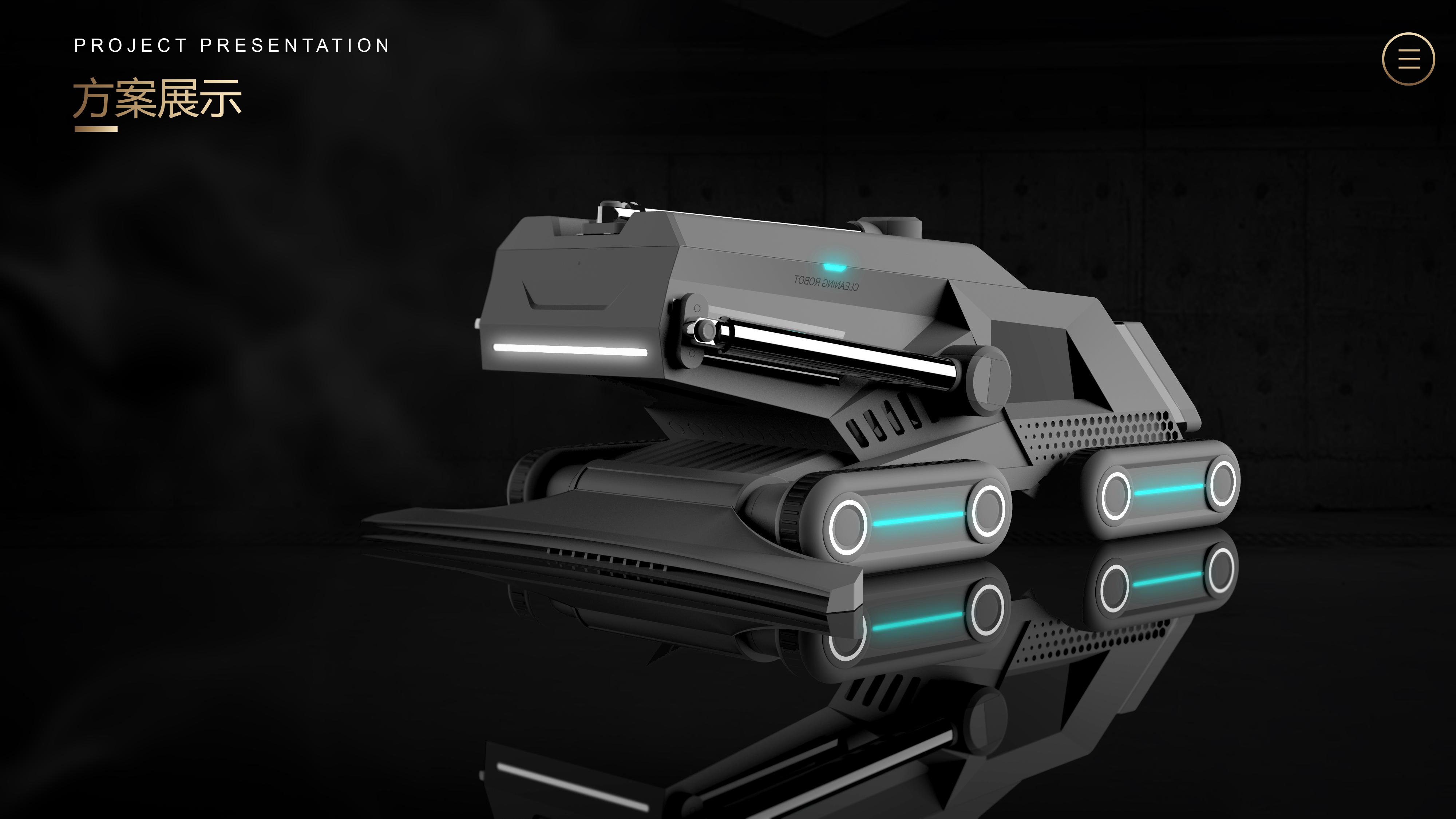
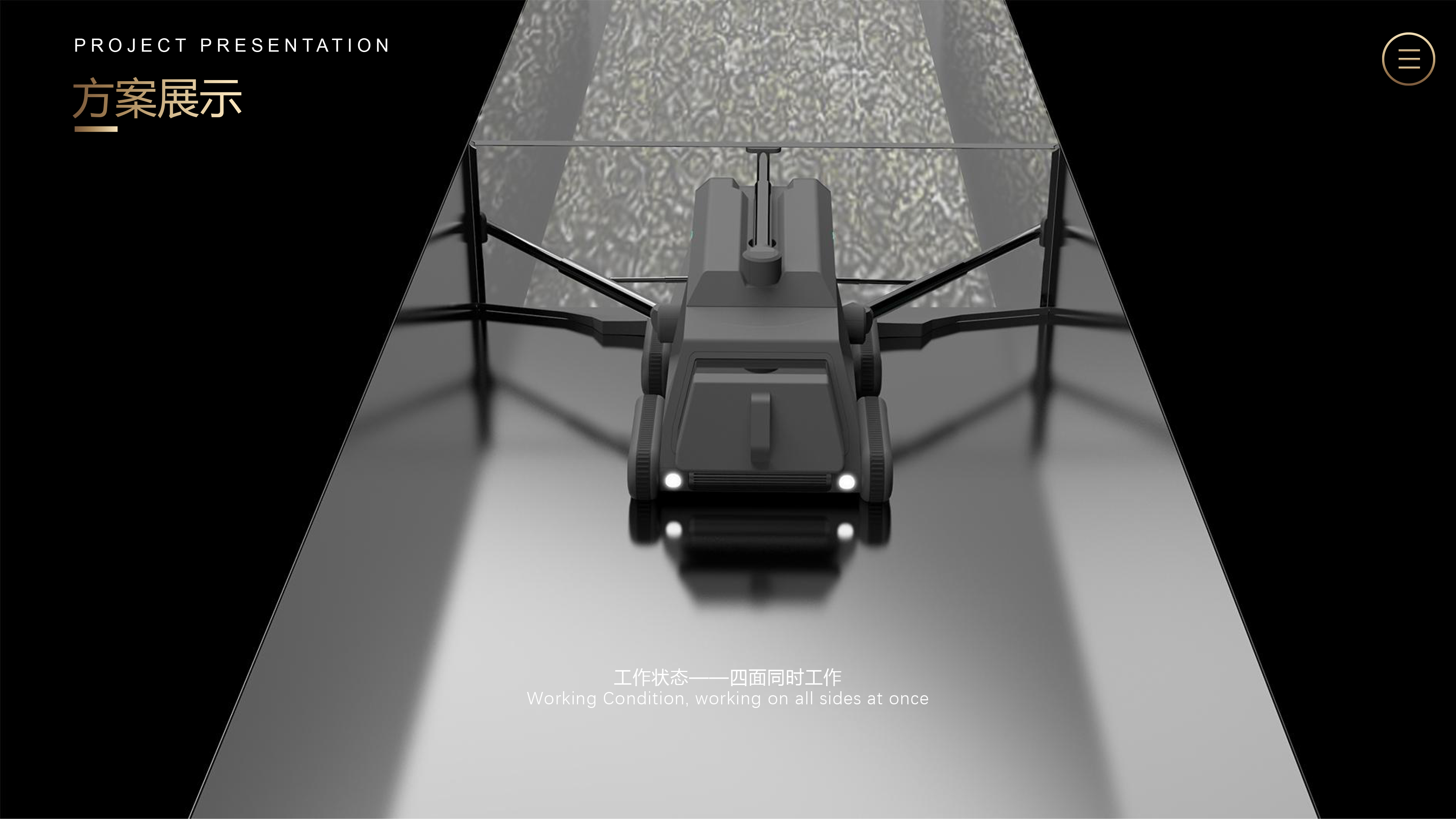
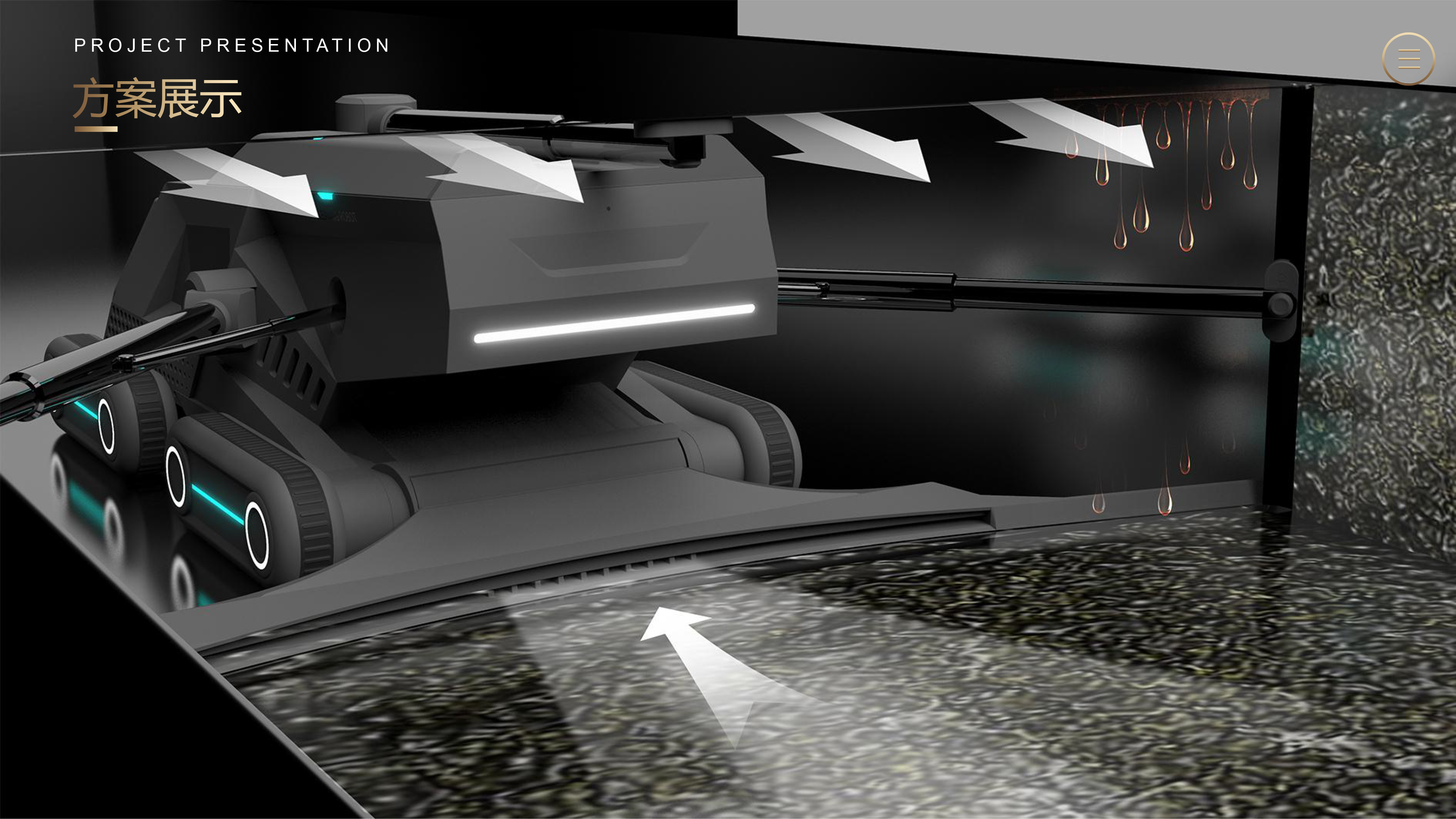
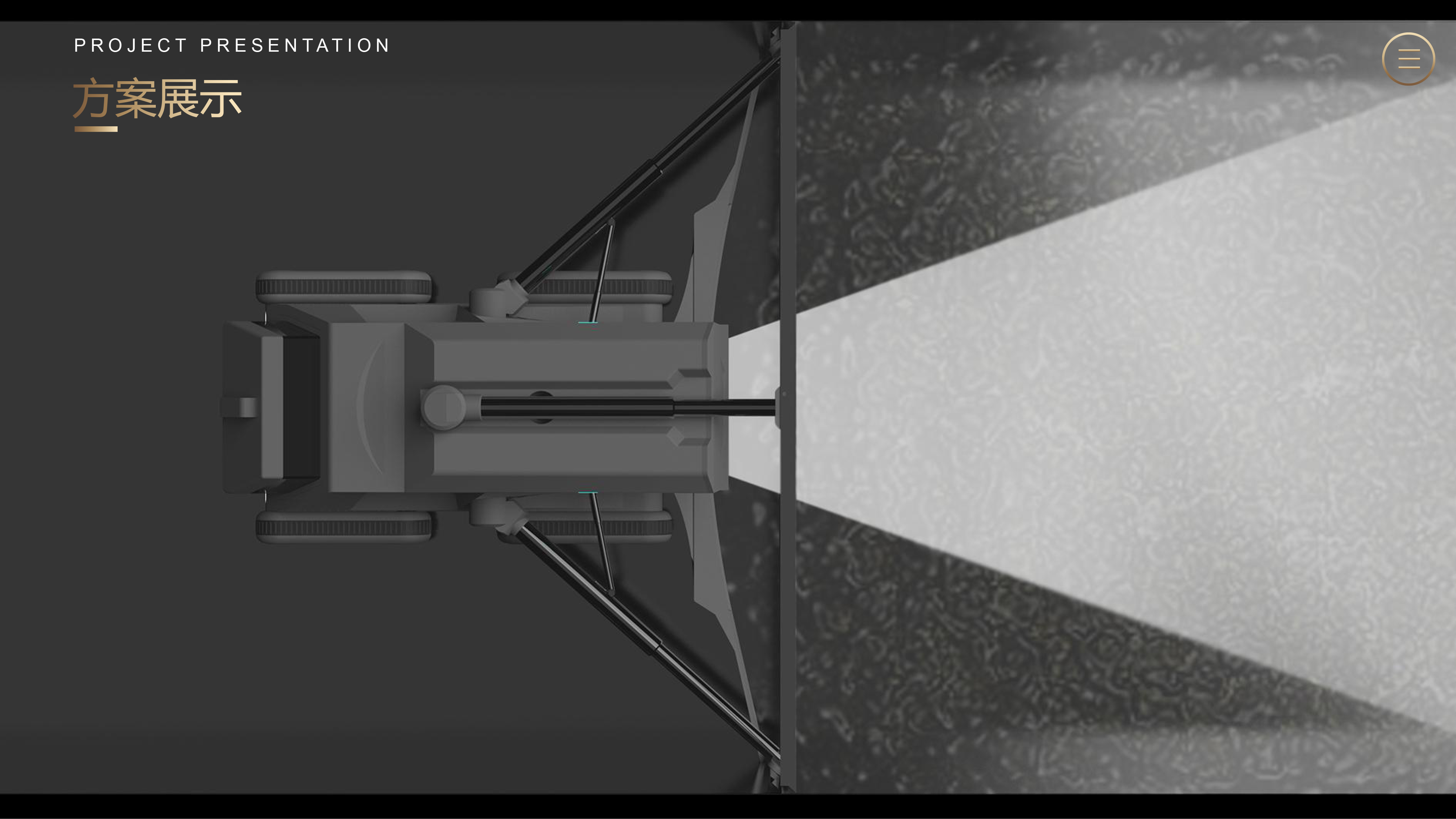
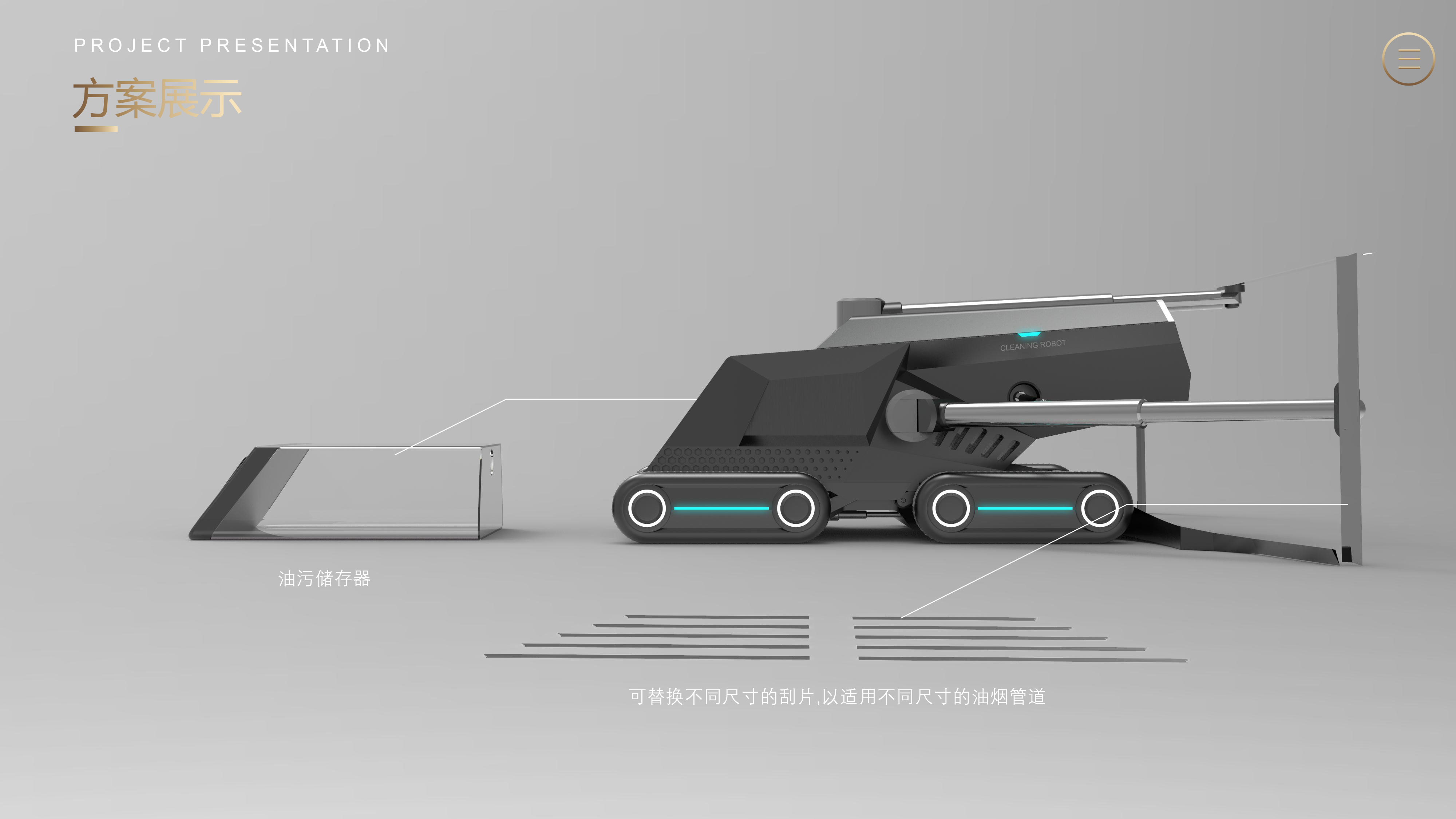

The copyright of this work belongs to 🐽. No use is allowed without explicit permission from owner.

New user?Create an account
Log In Reset your password.
Account existed?Log In
Read and agree to the User Agreement Terms of Use.

Please enter your email to reset your password
Good idea, there is still much room for improvement.